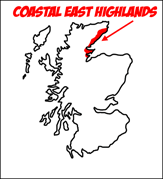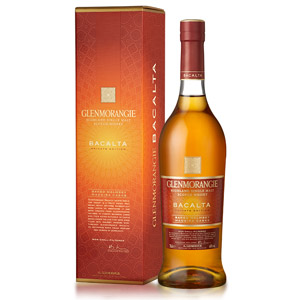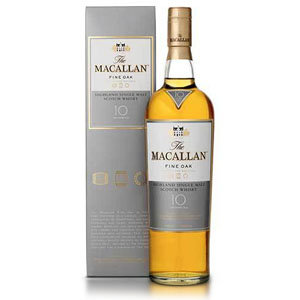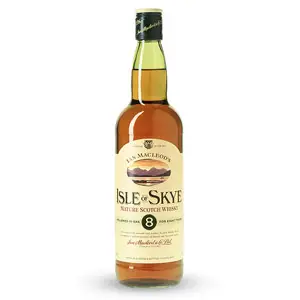Glenmorangie will be forever in my mind a “blank slate” malt, which takes to barrel finishes like Velcro. Glenmo, to me, has no house style and changes itself, chameleon-like, with each new release. The 8th “Private Edition” (what exactly is private about these?) Bacalta, for instance, is aged in standard ex-bourbon casks and then finished in Malmsey Madeira wine casks. Apparently “Bacalta” is Scots Gaelic for “Baked”, and these casks were, at one point, “baked under the sun” or some nonsense. Personally, I think that means someone forgot the shipment from Madeira had arrived in the parking lot and left the barrels there for a few weeks before someone brought them inside, but maybe I’m a skeptic.
Whatever your feelings for NAS whiskies, ridiculous names with stories to go with them, or $110 annual releases, this damn stuff is tasty. I’m a sucker for round, malty whisky finished in sweet fortified wine casks, and Bacalta delivers on that front, at least.
The Internet, the wisdom and reliability of which Shall Not Be Questioned, has revealed that Bacalta (like most Glenmorangie Private Edition releases) began as 10 year-old “Original” Glenmorangie, and was aged for 2 years in the madeira casks. We can be reasonably assured that the whisky is thus 12 years of age. Without an age statement on the bottle, however, that could all be a giant lie. Caveat emptor, and all that.
Oh and hey, LVMH, don’t think I haven’t noticed that these annual “money pit” special editions have been stealthily increasing in price every year. That said, I guess one shouldn’t be looking at products from Louis Vuitton for value.
Nose: Raw honey, light jammy resin (think marmalade), and sultanas (golden raisins) greet the nose. Deeply sweet, this is unarguably a dessert whisky, and bears (so far) a striking resemblance to Glenmorangie’s Nectar D’Or. There may be more depth here, however, with an interplay of bubble gum, tutti-fruiti, glazed scones, and apricot jam. Yum.
Palate: Thin body. A mild initial tongue burn gives way to more honey sweetness. Golden raisins again, lemon bundt cake, cake frosting, candied ginger, and orange creamsicle.
Finish: Medium-long and warming. Raw honey pervades, and fades with more apricot, marzipan, and absolutely no bitterness. Decadent.
With Water: A few drops of water seem to have no effect, except maybe to make the liquid’s texture on the tongue more silky or syrupy (odd). Water is fully not necessary with this, and I prefer it at the bottled strength.
Overall: A fantastic dram for those that like sweet things in their whisky. The madeira effect is less of wine and more of deeply sugary treats. All of the tastes and smells that come to mind are dripping with crystalized sugar and deep, concentrated fruits. Unlike a heavily sherried whisky, where those fruits are dark and jammy and resinous, these are fresh and sweet and vibrant. Objectively, Bacalta tastes like an amped-up Nectar D’Or with fewer tart fruits and more honey and stewed stone fruits. Absolutely lovely, but spendy. This is probably only worth $110 to you if you’re comfortable, in general, with dropping more than $100 on a bottle of whisky. If not, stick to Nectar D’Or and enjoy the 50% discount.


About The Distillery
Glenmorangie has been an innovator in the industry for years, pioneering cask expressions and experimental bottlings of their exceptional Highland whisky. Often cited as the biggest-selling whisky in Scotland, Glenmorangie is also attracting a lot of international attention, winning awards left and right. Among their cask-aged expressions are the Nectar D’Or (matured in French Sauternes casks after 10 years minimum in bourbon barrels), Quinta Ruban (matured in port barrels), Lasanta (matured in oloroso sherry casks), and more. Glenmorangie sources its oak casks in the Ozark mountains and loans them for four years to the Jack Daniels distillery before using them for Scotch. Glenmorangie’s water flows from the Tarlogie Springs in the hills above the distillery, over sandstone (yielding hard water) and picks up flavor components from the clover and heather in the hills before entering the distillery, where 24 very long-necked stills called the “giraffes” make Glenmorangie’s classic Highland malt. Glenmorangie, like Ardbeg, is owned by luxury giant LVMH (Louis Vuitton Moët Hennessy).






Funny to me that the NAS which is supposedly 12 years old is double the price of the 12 year age stated Nectar D’Or, Lasanta, and Quinta Ruban. Are Madiera casks really that much more expensive than Sauternes, Sherry, or Port?
AndewO: You’re asking the wrong question. A price is never based on production costs. It’s always based on what people are willing to pay.
This doesn’t cost $100+ because it’s so expensive to make. It costs $100+ because people are willing to pay $100+.
This principle applies to almost everything you buy, by the way. Enjoy!
Yeah, I agree; the price is ultimately supported by the perception of quality/value and the manipulation of that perception. But I think Andrew is also getting at something else: that NAS marketing is, evidently, about the premiumization of stock.
The removal of product information allows the customer the ability to invent their own “premium” backstory for a product and thus “justify” the higher price they just paid – much as people do with JW Blue Label. There’s still a very wide perception out there that NAS is somehow “special whisky” that has undergone “secret processes”, as opposed to just expressions that have had their age omitted from their label. It’s true that “it costs $100+ because people are willing to pay $100+”, but all the “special/secret” stuff associated with NAS is one of the reasons this is so. Pricing is mainly driven by the perception of quality, not any real evidence of quality, because the great majority of those buying the bottles probably will NOT have tried the whisky before they shell out for the product.
No, they aren’t. What makes it expensive is 1) The success of this particular vatting… aka it “tastes” more expensive… if the results were mediocre, these casks would have been blended into something else. 2) The costs of limited bottlings are always higher due to the lack of economies of scale (new labels, new barcodes, custom-purchased and moved-around casks, special bottling line handling, distribution complexities, new marketing, etc.) and because of the “rarity” induced by the release of a limited number of bottles. Is it WORTH $110? Probably not, but I guarantee you that they will sell out of bottles.
The notion that the high price is based on the excessive costs of things like labels and barcodes is laughable.
They make a product that costs X. They sell it for X+Y. Y is their profit and it might be a lot. I’m OK with that—it’s the fundamental principle behind every product in the world existing. But let’s call a spade a spade and not look for absurd justifications for the prices we find.
Successful products are worth more than what it costs the producer to make them. That’s good. If it wasn’t the case, nobody would make them.
Successful products are worth more than what it costs the consumer to buy them. That’s also good! If it wasn’t the case, nobody would buy them.
Is it really necessary to be this aggressively dismissive when you post on my site? Your initial comments were thoughtful and encouraged respectful discourse, which I appreciated. Now, you’re calling my thoughts “laughable” and “absurd”? Do you enjoy having people dismiss your opinions with terms like that? Can we all try to be a little more respectful of other people, please? Some of the blogs that I respect most long ago turned off comments on their respective sites, which is starting to look more and more appealing these days, and I’m starting to understand why they made that choice.
On to your point, I believe my comment included the increased cost of one-offs due to lack of economies of scale (which IS a significant cost — most “craft” whiskies have elevated retail prices due, IN PART, to those same overhead costs) as ONE ASPECT of the increased retail price of limited-release bottlings, and not even the first one that I listed.
I think it’s fair to say that there are legitimate higher costs associated with smaller releases. I also think it’s fair to say that, given the proportionality, it isn’t these higher associated costs that are primarily driving prices ON these smaller releases these days. Both are respectable ideas, and I didn’t take the Noob as saying that associated costs WERE the main drivers on present pricing (and “induced” rarity is a legitimate point that almost nobody talks about).
I think what makes things more expensive these days is the hype around releases against the backdrop of selling the ideas that big price increases are just a fact of life combined with some level of (blind) faith that you’re buying what you perceive to be quality.
And quality vs. value is an important distinction.
“Successful products are worth more than what it costs the consumer to buy them. That’s also good! If it wasn’t the case, nobody would buy them.”
It’s an interesting idea because, although people do pull the trigger on a lot of new and evermore expensive releases these days, I’m not sure that a lot of people think that the releases are always, or even often, “worth it” in an objective sense – or that it’s even something they want to look at. Yes, they make the purchase, but I think that it’s often more and more in the knowledge that their quality-price ratio on what they’re buying is in the toilet and still falling fast, because there’s only so good that a whisky CAN get, but no end to higher prices in sight.
You pay the price to ride the ride – so you’ve decided that it’s “worth it” to you in that sense – but I don’t think it follows that people are necessarily thinking that what they’re buying is a fair trade for their money so much as a case of not looking/going to other options (yet). They want a whisky, they’re curious about this one or that new one on the basis that it might be a little different than what they’ve already tried and just buy it, most without ever having tried it beforehand.
With expensive bottles (however that’s defined for each individual) I think value or “worth” is many times sort of tossed out the window as part of the excitement of the purchase – “this is new, unknown, supposed to be good… sure, the price is a bit of a nosebleed, but I’m going for it” – all the in context of people knowing that, for the experienced taster, the chances of any given buy being a superior mind-bending experience, as opposed to just a slightly different experience, are very low indeed. Many people DO buy these bottles, but not really based on the idea that they are “good buys” or “a relative bargain”.
Looking at Ardbeg releases, I think that even a lot of people who DO buy them would probably echo the Noob in saying “is it WORTH $110 (or more!)? Probably not, but I guarantee you that they will sell out of bottles”.
I put it out there as food for thought, but it’s just something I’m mulling over.
Hey Noob. Apologies—I think you’re right that I put that more aggressively than I ought to have.
I’ve been seeing many discussions lately where folks are trying to justify high whisky prices based on what it supposedly costs to produce the stuff, and I think that notion is fundamentally wrong—including the seemingly more legit production costs you mentioned. All we need to do is look at the often very fair prices charged by independents for their single cask whiskies to see that the costs of moving, packaging, and marketing these one-offs don’t really necessitate a huge bump in the retail price. Rather, companies are simply pricing based on what people will pay.
It’s OK! I’m sure soda is super-cheap to make, but dang if it ain’t worth my 50 cents on a hot summer day. I’m OK if 25 cents of that is profit to all the folks who brought it to me.
I think scotch is much cheaper to make that most people suspect, but dang if it ain’t worth my $70 for weeks of fine evening sipping! I’m OK if $35 of that is profit to all the folks who brought it to me.
Cranking up the humor, you had me laughing out loud SN. Thanks.
50% discount? Where I am nectar d’or is 80 and the new bacalta is 90. Not much of a premium. Still recommend the nectar over the bacalta if it’s only 10 bucks more?
Amazing how different prices are across the country/world. Here, Nectar D’Or is $60 and Bacalta cost me $110. Are you sure that’s the 12 year-old Nectar D’Or, and not the 15? I would indeed pay $10 more for Bacalta, if those were my options… although I’m pretty sure I wouldn’t pay $80 for the Nectar.
Here in Ontario, Canada, we’re held hostage by the LCBO’s government monopoly. Glenmorangie’s Nectar D’Or 12, which I like is $123 CAD. We can’t even get Bacalta. But the steep price is of Nectar d’Or is why I’ve never purchased a bottle. I’ve had it in bars and I’ve enjoyed it, but Lagavulin 16, my favourite malt, is $125 CAD. So Glenmo’s ND 12 is “not worth it” to me. My buddy, on the other hand, hates peated whisky (how are we even friends?) and Nectar d’Or 12 is one of his faves. Different strokes, I guess. All that said, I feel that Islay Mist 8 is a steal at $30 CAD. It’s a blend, but it’s made with Laphroaig (that’s at least 8 years old) and it’s eminently drinkable.
Man, facing those prices I would make a biannual pilgrimage south across the border and stock up. 😉
I’m a good 4 hours from the closest border crossing….and getting across without my “purchases” being noticed and taxed to the point of negating all savings is a deterrent. It’s forced me to find more “affordable” alternatives and to drink less. 🙁
Didn’t mean to stir up the old NAS debate again on here. Really was just curious about the costs of the casks used in Bacalta. Here in IA, Nectar D’Or is $60 and Lasanta and Quinta Ruban are $50-55.
The cask used for bacalta, according to glenmorangie are “bespoke” casks. They did not just go down to the corner cask store and buy these like they did with the sherry, port, etc. cask. They specified the oak to be used, had it made into barrels at the cooperage they chose and toasted them to their specifications. Then they shipped their barrels to Madeira, had them filled with wine of their choosing and had them stored exactly the way they wanted.
This level of detail and control cost money. This as well as marketing account for the relatively high cost of this scotch. If you don’t buy any of this then don’t buy the scotch. I for one appreciate the effort that goes into the creation of something like this…
Yeah, but those costs aren’t something they incurred just so they could subsequently RECOVER them later with a commensurately higher retail price. They ACCEPTED that they would incur those costs because they expected that the “gimmick” (and I don’t meant to be derogatory) would empower them to command the high prices we see.
In short, costs don’t drive prices. See the discussion above.
While buying a liter of Glenmo 10 for $35, I saw they had more Baclta in selling for around $60-65. Thought about buying it but passed. May go back and get one next time I’m in. Nectar d’Or is around $45-50. I did enjoy the Companta occasionally so would this be a good buy.
Hi Robert, which city do you live? Bacalta for 65 seems pretty cheap…
Now let’s wait for Spios (Private edition 9) coming soon!